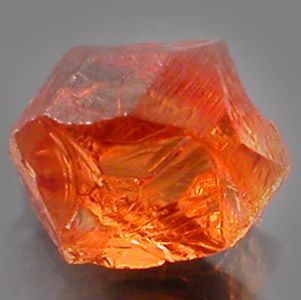 Paraiba Tourmaline stone was not found until very recently, & was discovered in the year 1980. The world has one guy and his solid faith to thank for the revelation of this one of a kind stone i.e. Heitor Dimas Barbosa. Energetically, he and his subordinates invested many years digging in the pegmatite displays of some humble slopes in the Federal Brazilian State of Paraiba region.
Paraiba Tourmaline stone was not found until very recently, & was discovered in the year 1980. The world has one guy and his solid faith to thank for the revelation of this one of a kind stone i.e. Heitor Dimas Barbosa. Energetically, he and his subordinates invested many years digging in the pegmatite displays of some humble slopes in the Federal Brazilian State of Paraiba region.
Heitor Dimas Barbosa was someone beyond somebody searching for crystals. Moreover, he wasn’t even searching for anything the presence of which had also been demonstrated. Heitor Dimas Barbosa was completely persuaded that somewhere underneath the modest hills of ‘Paraiba’ region, he was going to discover something ‘absolutely unique’. Furthermore, right he was. In the year 1981, he started with the initial arrangements for digging at an old, incapacitated opencast mine.
He dug one profound hole after another bored in the hard ground – without progress. But abruptly, almost five and a half years later, the cut of the primary spade, the principal indications of a tourmaline exhibited themselves in the twist of displays, shafts, and passages. Lastly, in the autumn season of the year 1989, a bunch of the best tourmaline gems was raised into the light from one  of the numerous displays- in shades of which individuals had so far only had the option to fantasize. Shockingly, exactly around then, of all times, the ‘Father of the Paraiba Tourmaline stones’ was caught up with getting over disease and was unable to be available at the mine.
of the numerous displays- in shades of which individuals had so far only had the option to fantasize. Shockingly, exactly around then, of all times, the ‘Father of the Paraiba Tourmaline stones’ was caught up with getting over disease and was unable to be available at the mine.
In the year 2001, more copper-hued tourmaline crystals were explored in the Nigerian region. Usually, the Nigerian stones were not as lucid as those from Brazil, though the variety of shades overlapped. With the best possible devices, the Nigerian quality can be recognized by its main content, which the Brazilian quality stone needs.
After several years, still more copper-bearing tourmalines stones were found, this time in the Mozambique region. Their shades are closely related to those of the Brazilian value, yet their chemical structure is significantly more perplexing, with different measures of magnesium, copper, bismuth, and lead. An enormous quantity of these tourmaline gems does not include any lead and have syntheses that overlap the Brazilian tourmaline Gemstones.
 The transparent
The transparent  Myanmar country is producing the red Gemstone Spinel on a huge level but Sri Lanka was the mainly produced source of the historical Gemstones.
Myanmar country is producing the red Gemstone Spinel on a huge level but Sri Lanka was the mainly produced source of the historical Gemstones. The
The  Tahitian Pearls are elementary developed in the Islands of French, Polynesia around Tahiti but Tahiti does not actually output these black Pearls. Tahitian Pearls are mainly grown in French Polynesia. There are two archipelagos liable for the massive manufacturing of these unique Pearls that are the Tuamotu Archipelago and the Gambier Islands.
Tahitian Pearls are elementary developed in the Islands of French, Polynesia around Tahiti but Tahiti does not actually output these black Pearls. Tahitian Pearls are mainly grown in French Polynesia. There are two archipelagos liable for the massive manufacturing of these unique Pearls that are the Tuamotu Archipelago and the Gambier Islands.


